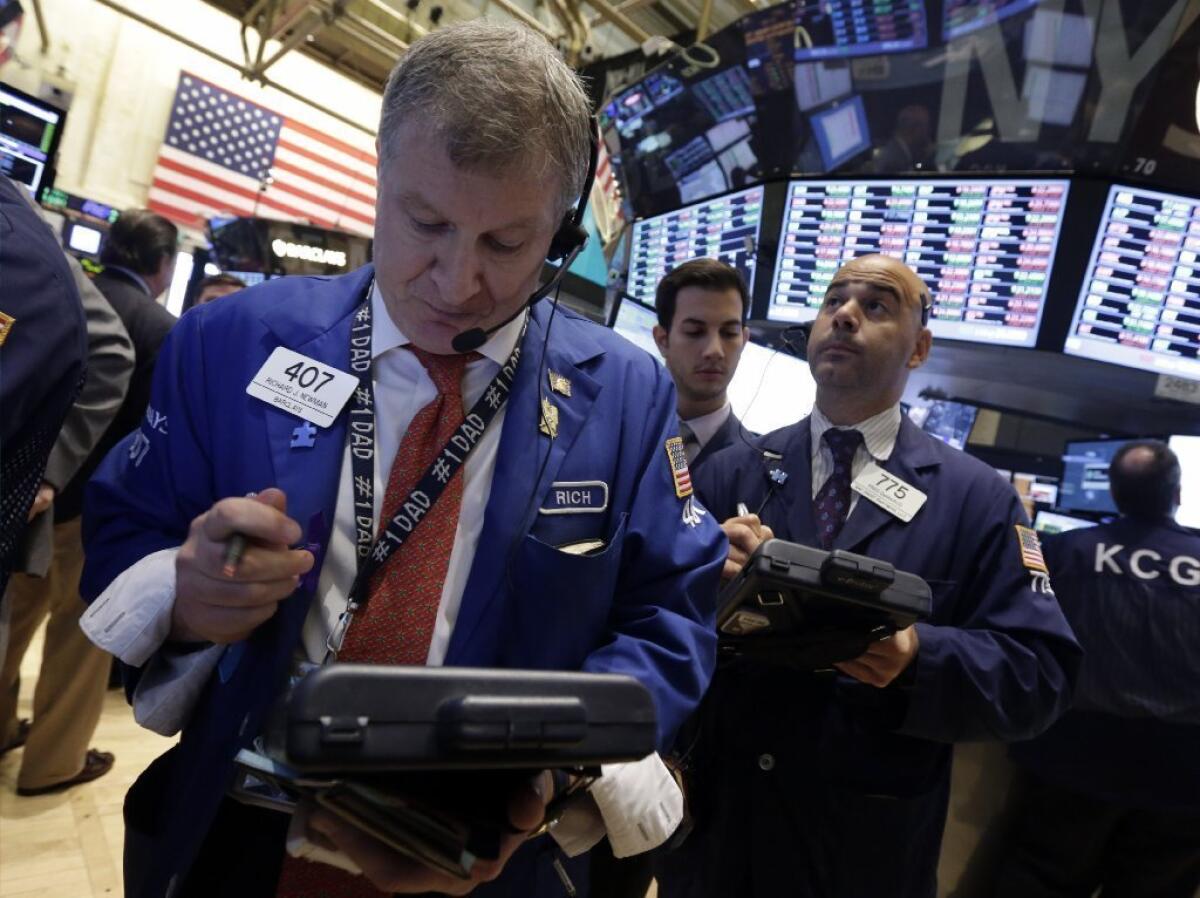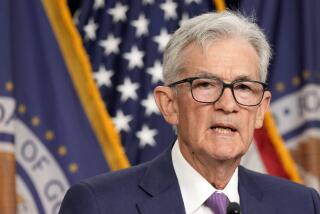Fed minutes: Is a bond-buying cut looming? Maybe not

WASHINGTON -- Top Federal Reserve officials, viewing the economic outlook with a little more caution than before, remain divided on when to reduce their bond-buying stimulus.
Minutes of the Fed’s last policy meeting at the end of July reveal that officials of the central bank still have not reached a consensus on the appropriate timing of tapering their $85-billion monthly purchases of Treasury and mortgage-backed securities -- despite analysts’ expectations that the first cut will come in September.
QUIZ: How much do you know about China’s economy?
A “few members” of the policymaking group, known as the Federal Open Market Committee, wanted to wait for additional information before changing the bond-buying program, but a “few others” indicated that it “might soon be time to slow somewhat the pace of purchases,” according to the account released Wednesday after the usual three-week lag.
Financial markets around the world have been on edge in anticipation that the Fed will soon start to scale back the program, which has pumped the financial system with cash in an effort to hold down long-term interest rates and support the housing market and broader economic growth. Ten-year bond yields have risen sharply in recent weeks.
While many analysts have predicted a program cut at the Fed’s next policy meeting Sept. 17-18, the latest minutes, plus recent jobs data since the Fed’s July meeting, suggest that that’s far from a sure thing.
Fed Chairman Ben S. Bernanke and his colleagues have previously indicated that they would like to see a substantial improvement in the job market outlook before making changes to the latest bond-buying program, launched last fall.
But the minutes show Fed officials as being more guarded about the economic outlook.
While Fed policymakers generally expect economic growth to improve in the second half of this year, the minutes said, “a number of participants indicated, however, that they were somewhat less confident about a near-term pickup in economic growth than they had been in June.”
The minutes cited such factors as “recent increases in mortgage rates, higher oil prices, slow growth in key U.S. export markets, and the possibility that fiscal restraint might not lessen.”
Furthermore, although Fed officials noted the solid gains in job growth in June -- the last monthly jobs report that they saw before the meeting -- policymakers pointed to the still-high jobless rate and other statistics, such as the large number of involuntary part-time workers and low labor participation rate, as “indicating that overall labor market conditions remained weak.”
Since the Fed’s last meeting, the government released the July jobs report, which showed slower payroll growth and a small increase in the involuntary part-time employment, as many of the new jobs created in recent months have been in lower-paying industries that offer fewer hours of work. In addition, some federal workers have been required to take furlough days off as a result of government spending cuts.
“Because there is some question still about what constitutes significant improvement in the labor market, the committee is likely to wait for the August employment report on Sept. 6 to make up its mind,” said Chris Rupkey, chief financial economist at the Bank of Tokyo-Mitsubishi.
At the end of the day, Rupkey said, the Fed could still very well make its first bond-buying cut in September. But given the qualms still within the Fed, he added, the amount “could be quite modest.”
ALSO:
Tech industry slips into a surprising slump
Obama suggests next Fed chief should focus on jobs
Pimco’s El-Erian sees no Fed interest rate rise until at least 2016
More to Read
Inside the business of entertainment
The Wide Shot brings you news, analysis and insights on everything from streaming wars to production — and what it all means for the future.
You may occasionally receive promotional content from the Los Angeles Times.











